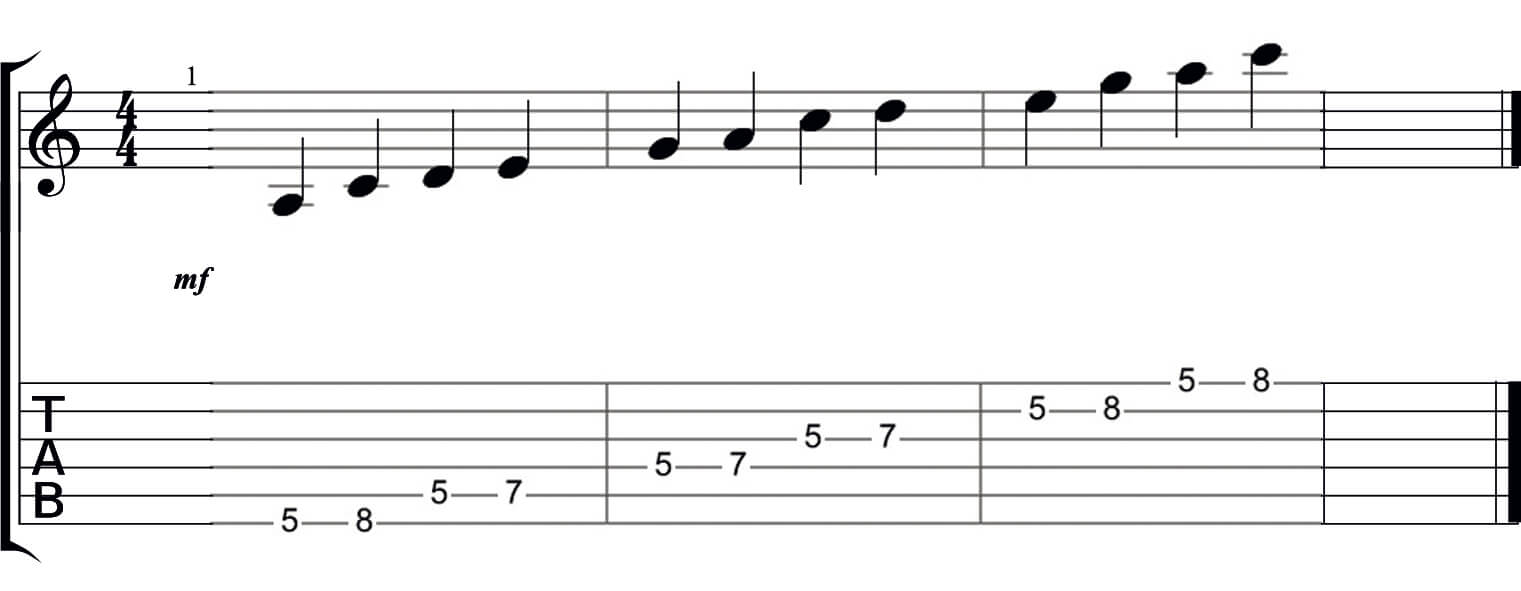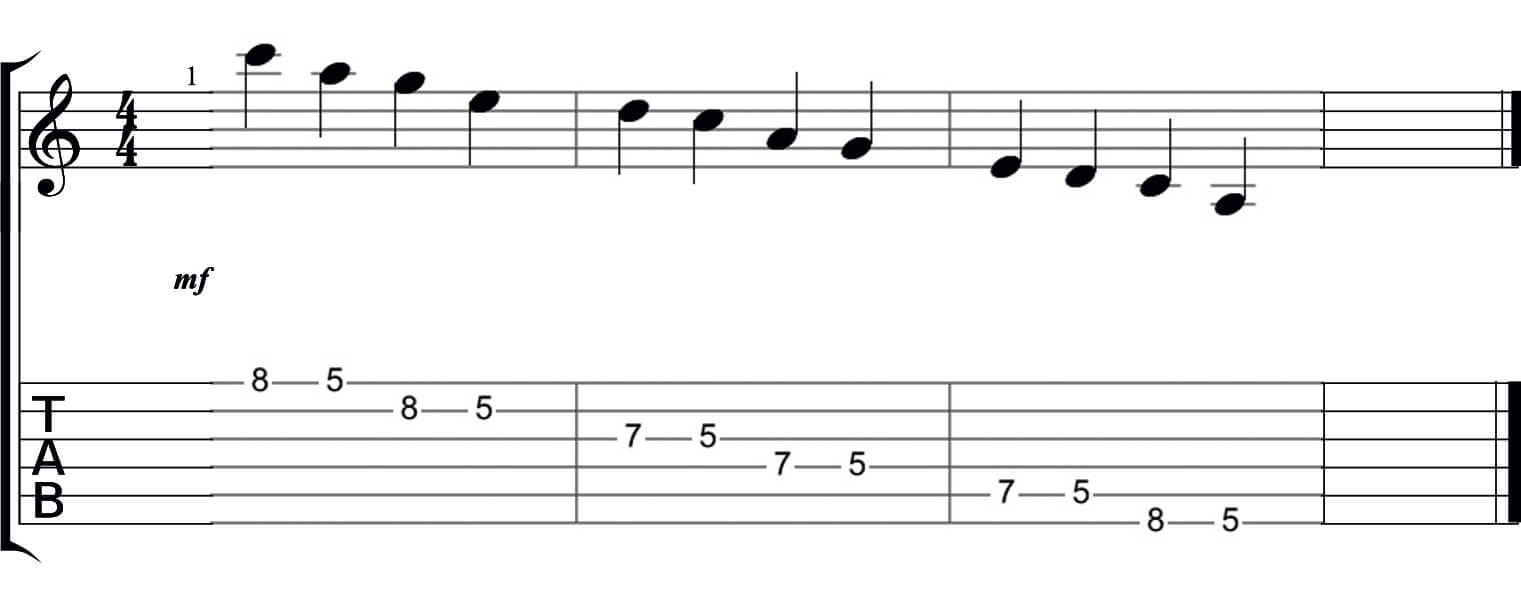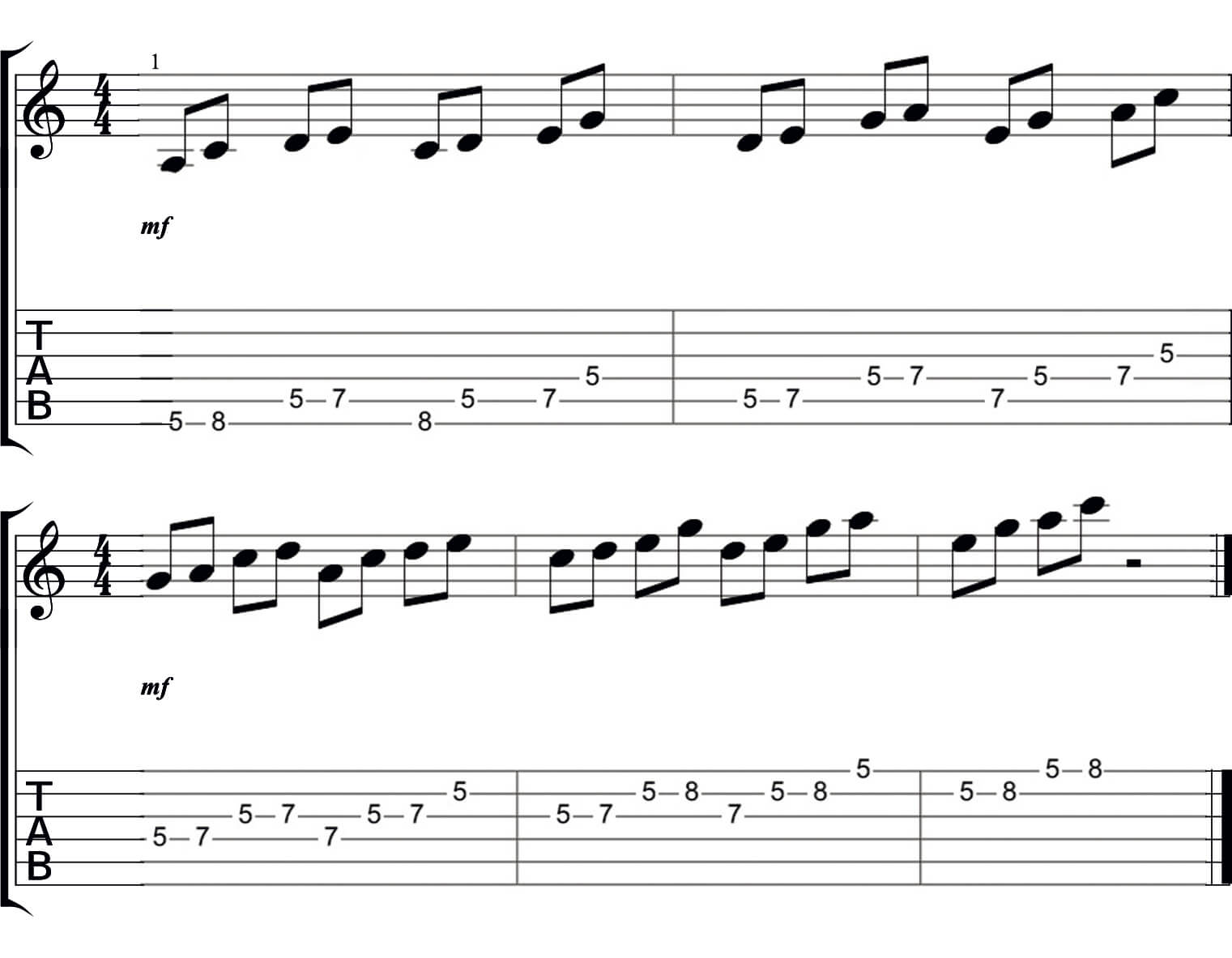Essential Blues Guitar Lessons Part 5: The minor pentatonic scale
Now that you’ve got your 12 bar rhythms nailed and you’ve started to learn about turnarounds, the next step is to start to integrate the idea of some lead guitar into what we do.

Lead guitar is something that every blues aficionado will be no stranger to. There are a lot of notes on the guitar, so where do we start?
There is one scale type which has become a mainstay in every blues guitarist’s arsenal, the minor pentatonic scale. Cast your minds back to Lesson One; where we discussed the idea that everything comes from the Major Scale. We will be using the same A Major scale we used in the first lesson to create our minor pentatonic scale.

Once we have this scale, we will be constructing a scale using specific intervals from this. We will stick in the key of A minor and we will be using the following intervals:

The first thing you’ll notice is that there are 2 intervals included that aren’t in the major scale, the bIII and the bVII. Their non-flat equivalents are in the Major Scale. Similar to when you flatten the third interval to give you a minor chord, in the case of pentatonic scales, you’re flattening the third and seventh interval. The pentatonic scale is only made up of five notes, to the second and sixth intervals are not used (Penta meaning five).
The 5 notes that make up this scale are found all over the fretboard in different positions. The scale as it’s commonly known has 5 shapes, this is the first shape of the scale written out ascending as TAB:

And again but descending:

You might be thinking, there are 12 notes written on that scale, but we said it was only 5, the reason for this is that the notes repeat. The scale has three root notes, the 5th fret on the low E string, the 7th fret on the D string and the 5th fret on the high E string. The notes in between these root notes are your C, D, E and G respectively.
One easy pitfall for all guitar players when learning scales is to fall into the trap of playing the scale in a linear fashion, always moving up and down by one note that follows the note before. Scales should be used as a guideline to what you can play, not what you should play.
The following 2 exercises break the scale up into ascending and descending four note groupings and work through the scale. This is a great way to familiarise yourself with the notes of the scale. This can also be a good speed builder, if you want to follow this with a metronome set your tempo at a comfortable pace and play two notes per click.
Ascending:


Descending:

Try It Yourself
The minor pentatonic scale is a transposable scale, meaning you can play the same shape anywhere on the fretboard to suit whatever key you might be playing in. The first note of the scale is the root note which determines your key. Try the scale in some different positions and see how it feels playing the scale around the fretboard. The higher you go, the narrower the frets which will present a different challenge to playing it somewhere with more space for your fingers.
If you have enjoyed this lesson and you’re looking for a guitar teacher in your local area check out our guitar lessons page and speak to one of our highly recommended teachers in your local area. If you are based in the Nottingham area check out our Guitar Lessons Nottingham page.
————————————–
About the Author
Leigh Fuge is a guitar teacher and professional musician from Swansea in the UK. He has taught hundreds of students face to face and via the MGR Music platform. He has over 10 years’ experience working in the industry as a touring musician, session guitarist and teacher.
